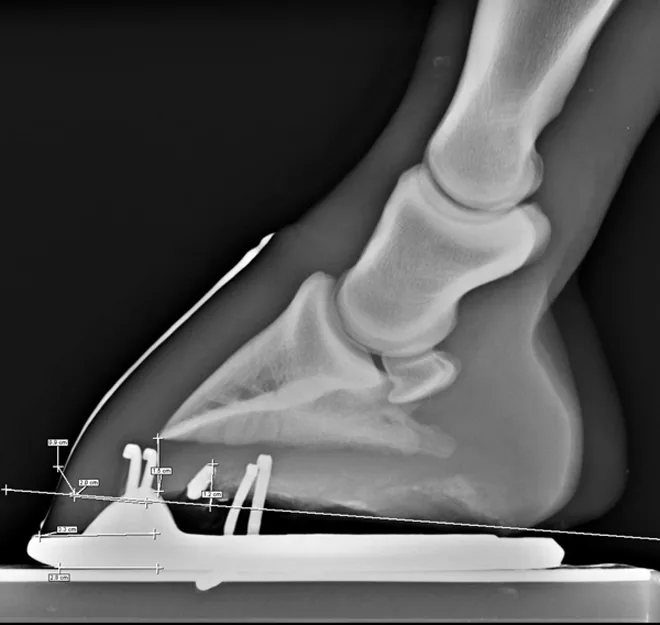American Farriers Journal
American Farriers Journal is the “hands-on” magazine for professional farriers, equine veterinarians and horse care product and service buyers.

One of the more common hind end problems that vets and farriers see is associated with negative plantar angles. This issue can present itself as a subtle limitation in performance to outright lameness.
The issue is first observed through subtle changes. Horses affected by negative plantar angle tend to land toe first and have an awkward breakover medially or laterally when turning, according to equine vet Andrea Floyd, owner of Serenity Equine in Evington, Va., and author of Equine Podiatry. They might exhibit resistance to being shod, resistance during training and have difficulty picking up canter leads. Some horses are clearly lame during movement.
“Symptoms can be subtle, ranging from having no obvious effect to being a factor in profound lameness,” says equine vet Mark Silverman with Sporthorse Veterinary Services in Rancho Santa Fe, Calif. “In many cases, the effects of low plantar angles are displayed as a limitation in performance, as opposed to an actual lameness. In severe cases, there can be chronic pain that is difficult to manage and treat.”
According to Silverman, a horse with negative plantar angles might drag the toes of his hind feet and develop a “bull-nose” conformation of the dorsal wall.
“These horses can tend to stumble a bit behind, and can have trouble fully pushing through to the end of the stride,” he says. “They might want to stand under themselves and not be comfortable standing squarely.”
Silverman also notes that some horses with this issue experience premature heel…